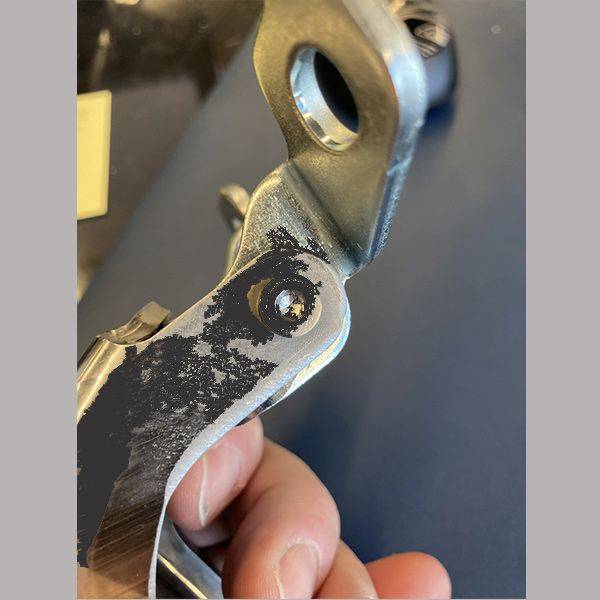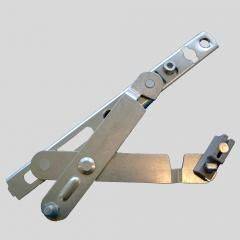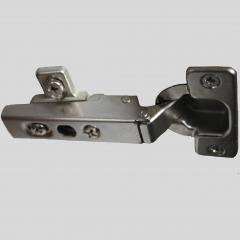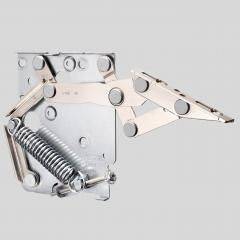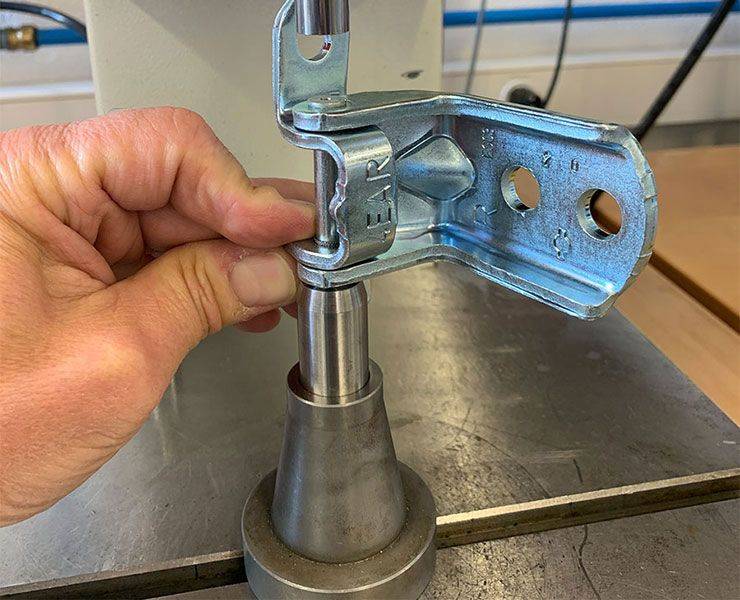
Hinges
WHAT
We had to form hinge pins for doors or hatches on automobiles. The goal was to form a rivet head to a minimal head diameter on a long shaft, and prevent bending of the pin.
WHY
The problem with former rivets was that they were bent through the riveting process. We had to achieve the necessary diameter of the formed head without bending the rivet shaft. Additionally, deformation of the bracket needed to be kept at a minimum to ensure proper torque after forming the head on the shaft.
HOW
Therefore the applied force during the forming cycle needs to be limited.
The radial cold forming process is ideal for this challenge—the rosette pattern which the tool follows forms material in three directions. Through changing the direction, the shaft can be kept straight, while keeping the force relatively low.
BalTec RN281 with HPP with long stroke riveting a door hinge
Facts & Figures
| Reference No. | UBCHA1013 |
| Riveting Force | 12-15 kN, max. 17 kN |
| Riveting Process | Radial |
| Material | Nickel plated steel rivet and nickel plated hinge brackets |
| Pin Length | 60 mm, diameter 8 mm |
| Shank Type | Straight, long rivet shaft |
| Rivet Head Geometry | Slightly convex rivet head |
| Forming Time | approx. 2 sec. |
| Forming Tool | Flat forming tool |
| Performance Data | The radial cold forming process; Force: approx. 12-15 kN |
| Device | Radial Riveting Machine RN281, CE compliant work station |
| Process Control | HPP-25 Process Control configured for integration in an automated line |
| Interfaces | USB, LAN, X4, X6, X9 |
| Area of Application | Automotive, Door hinges, Hinge pins, Hinge pivot point |
| User Benefits: Process | Forming head without bending hinge pin |
| User Benefits: Economic | Reduction of scrap rate / cost savings |
Project implemented by BalTec - Switzerland
For further questions or detailed information contact:
BalTec AG
Obermattstrasse 65
8330 Pfäffikon
Switzerland
Phone +41 (044) 953 13 33
E-mail baltec@baltec.com


